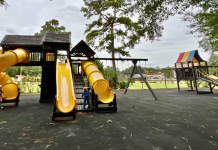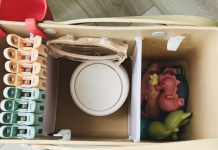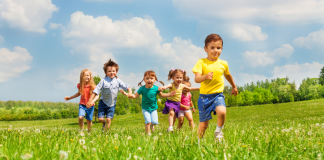With plastic being one of the biggest environmental issues today, I’ve looked deeper into how we can make small changes to rid ourselves of single-use plastics and eventually plastic altogether. Keep in mind, getting rid of single-use plastics is just the first step to a safer/cleaner world; and, hopefully, this post will help you identify options to use in place of them.
We’ve been programmed to use and buy single-use plastic forever. Let’s be honest, they are cheap and convenient and best of all, easy to clean up. I, as a mom, know how appealing that can be. Plastic utensils, plastic tablecloths, plastic silverware, plastic bags, plastic straws, you get where I’m going? It’s easy to use single-use plastics and toss them, never to be seen again . . . or so we thought. Unfortunately, all that plastic has been filling up landfills and sent to deserted islands/places, going into our oceans, destroying habitats, and hurting animals. It’s washing up on beaches, polluting our earth more than we could have ever expected.
Recycling is great, except have you ever been to a recycling plant? I have. It’s overflowing.
So now plastics are being shipped all over the world. The problem? Most plastic lasts forever. They are not compostable and will not break down over time which is why we have the plastic pollution problem. It’s up to us to make small changes.
I live on James Island which I know has gotten rid of plastic bags at stores and is getting rid of single-use plastics in restaurants, etc. It’s awesome! Cities can make the biggest changes which help us focus on the changes in our own homes and everyday lives.
Most plastic is made from naturally derived elements i.e. natural gas, oil, and coal, which sound bad but not nearly as bad as the binding chemicals that make it potentially dangerous to consume foods and drinks out of, microwave, freeze and yes, even play with. Toxic chemicals such as BPA (bisphenol A) and phthalates leach out of plastic and get into our bloodstream and tissue. These chemicals can build up over time and have been linked to certain cancers, endocrine disruptors, birth defects, and other ailments to say the least. This alone should be reason enough to dump the plastic.
 We are all aware of the single-use plastics (ones used once, maybe twice, and tossed) so how can we replace them and with good options that won’t break the bank?
We are all aware of the single-use plastics (ones used once, maybe twice, and tossed) so how can we replace them and with good options that won’t break the bank?
Better options for single-use plastics
Let’s start with plastic bags. I’ve recently switched my gallons sized bags to gallon-sized reusable bags. Smaller baggies (lunch, snack) I switched to good ole paper bags and try to use as much stainless steel and glass Tupperware as possible. Straws, easy and fun switches are paper (yes, they don’t last long), but noodle straws and stainless steel are great options as well! Plates, cups, lids, go for paper or if for a party, find compostable ones (my favorite are the ones from brandless.com).
Plastic wrap (saran wrap) we’ve switched to using unbleached parchment paper as well as bees wrap (Trader Joes even sells it). And most importantly, plastic water bottles, I am truly guilty of this one and work every day to not drink out of plastic water bottles. Switching up to a glass or stainless steel reusable bottle is definitely best. And most all these items can be easily ordered online or are at most consumer stores (Wal-mart, Target, Amazon.com, etc.).
So maybe you think you don’t use much single-use plastic, but what about long term plastics? My own kids have been using plastic plates and bowls from Target (of which I am now switching to glass or stainless steel). I was able to get rid of all of their cups of plastic ones and switch them to stainless steel kids cups with a food-grade silicone sippy cup top. Plastic food savers? We’ve all got it. I switched up mine to glass and stainless steel options. Straws in our home are now stainless steel.
There are tons of options to ditch the single-use plastic, and once you do, it’ll be that much easier to rid your house of plastic altogether. Our biggest challenge as consumers and having busy lives is just to be aware of it. Take a day or two and write down how much plastic you use/touch in the scope of one week. Now imagine that plastic sitting on a beach or in the ocean for thousands of years. My next challenge is ridding our hand soaps, shampoos, and laundry detergent (all in plastic containers) to glass ones.













